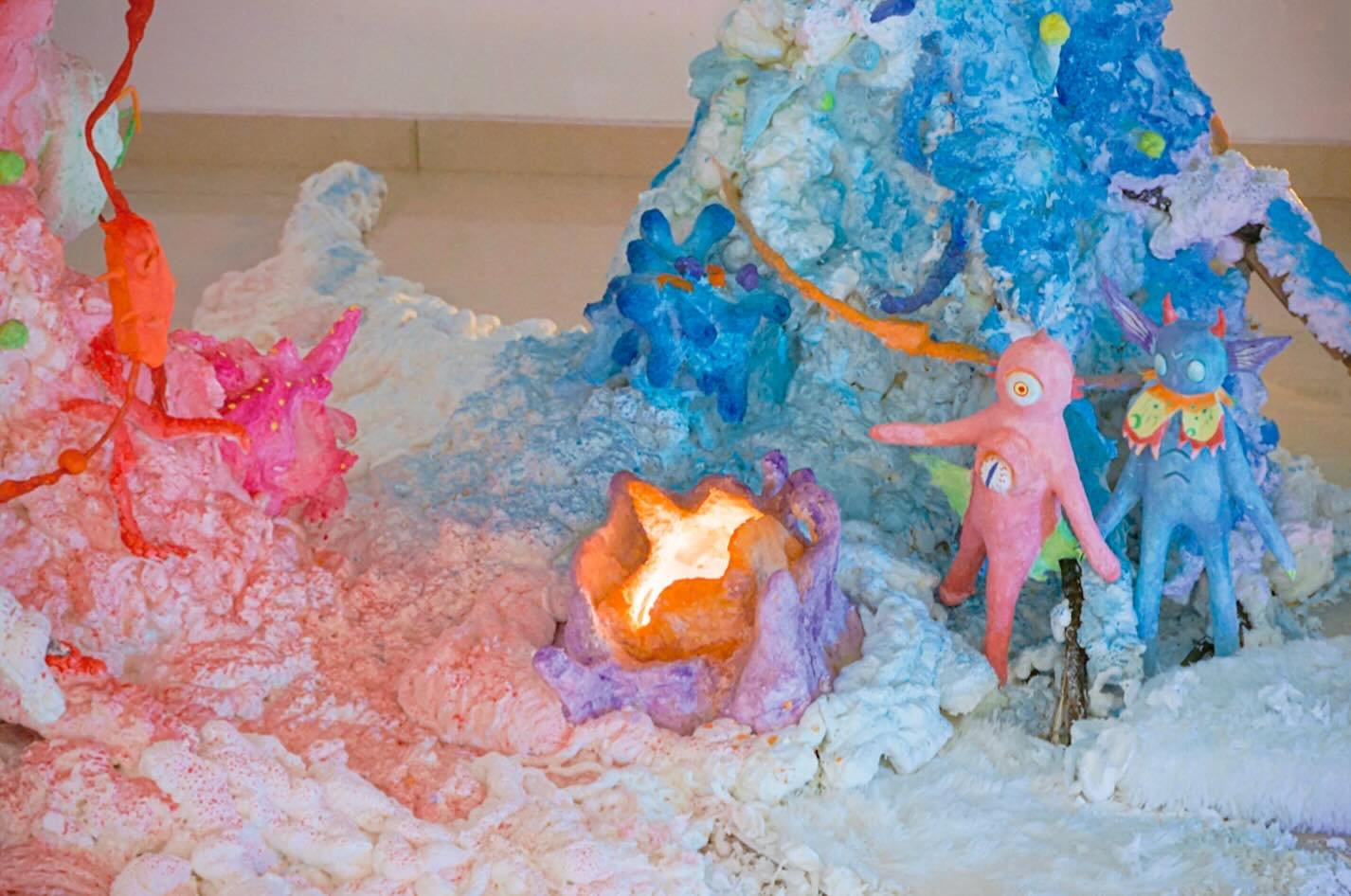Introduce:
BLANCE ISLAND investigates the intricate and often paradoxical relationship between marine ecosystems and anthropogenic influence. Through a sculptural installation that merges the aesthetic elegance of coral reefs with mutated, humanoid flounder forms, the work critically examines the impact of human activities—particularly chemical emissions and plastic pollution—on marine life. Constructed using sustainable materials, such as paper pulp, recycled plastic, and eco-friendly foam rubber, BLANCE ISLAND emphasizes an ethical approach to artistic practice while embodying environmental consciousness.

Conceptual Framework:
The hybrid forms at the center of this work are intentionally distorted, embodying the alterations imposed on marine species due to industrial waste and pollution. These sculptures juxtapose natural coral-like elements with anthropomorphized marine life forms, serving as a metaphor for the pervasive and insidious transformations occurring within oceanic environments as a result of human activity. By blending human and marine anatomies, the work visualizes the erosion of boundaries between natural ecosystems and the consequences of human intrusion, capturing the discord between ecological harmony and modern industrial impact.
Methodology and Materials:
Each element within the installation is crafted from sustainable materials—paper pulp, recycled plastic, eco-friendly foam rubber, and other resources chosen to align with the project’s thematic focus on environmental responsibility. The selection of materials is not merely aesthetic but represents a deliberate commentary on the feasibility and necessity of sustainable practices in both art and industry.
Significance:
BLANCE ISLAND serves as both an artistic exploration and a socio-environmental critique, offering a visual narrative that addresses the vulnerability of marine ecosystems in the face of industrial encroachment. By engaging audiences with visually striking, ecologically inspired forms, this work prompts critical reflection on humanity’s role in the degradation of natural environments and the ethical imperatives of ecological preservation. Through its unsettling beauty, BLANCE ISLAND underscores the complex interplay between adaptation and degradation, inviting viewers to contemplate the broader implications of ecological imbalance in the Anthropocene.


